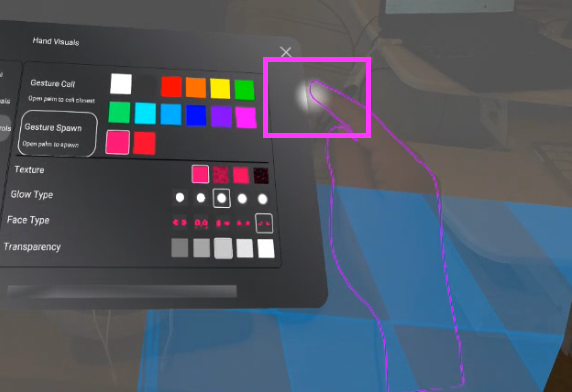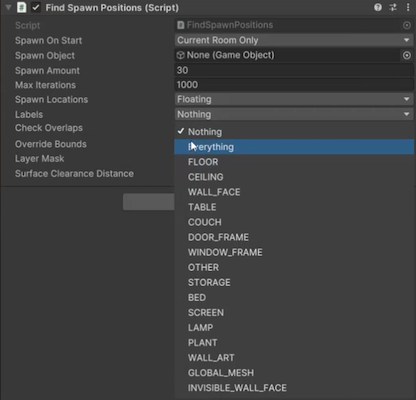A Mixed Reality Game About Mycelium and Connections
One of the highlights of the year so far has been working on my first mixed reality game. Our team was fortunate to secure pre-production funding from Screenwest to create a playable prototype for the Meta Quest 3 headset.
The team consists of myself as Narrative Designer/ Producer/ Game Designer, along with Kimberley Smith as Software Developer and Co-Game Designer and Cameron Whiting as 3D Artist. We also have sound designers and 2D artists coming on board soon.
We've now spent several months prototyping different interactions and game mechanics, and I thought it would be a good time to take stock of some of my critical learnings so far. Specifically in the areas of narrative design and user experience for mixed reality.
Overview of the Project
Mycelium (working title) is a single player game that uses the mycelium life cycle as a metaphor for human connection.
Developing a playable prototype within a set timeframe and budget means keeping a close eye on project scope. I’ve written previously about the importance of exploring potential design ideas for a mixed reality project and mapping technical features and feasibility. Both processes have helped our team remain focused on project goals while casting many cool ideas over to the “out of scope” task column.
From the outset, I wanted the game to focus on the player experience and how narrative could unfold in a spatial setting within their physical environment. So, the project has focused on the following elements:
Mixed reality experience
Developed for the Meta Quest 3 headset
Hand tracking as the core player interaction input rather than controllers
The player’s physical environment becoming an important aspect of gameplay
Narrative Design
The target audience for our game is people who love cosy, narrative-driven games. This is something relatively new in the mixed reality medium, with just a handful of good examples including Pillow, Wall Town Wonders, and Starship Home. All these games feature similar cosy elements such as cute characters, colourful and stylised visuals, and playful interactions with the physical environment.
Story
While developing the story for our game, I have spent a lot of time considering how it can unfold in a way that resonates with our audience, taking note of how other games have successfully achieved this.
In drafting the story (which has since seen many iterations!) I mapped out the critical path, outlining major scenes, story beats and player interactions. For our game, this is centred around the mycelium life cycle. A single tiny spore embeds itself within the environment and under the right conditions threadlike mycelium begin to expand and explore. Once established the network begin to grow their fruiting bodies which are mushrooms. When these are fully formed they release a cloud of spores and the cycle continues. A huge inspiration for this game was the book Entangled Life: How Fungi Make Our Worlds by Merlin Sheldrake. I was mesmerised by this species of life which is neither plant nor animal and at times seems to demonstrate sentience!
But this is not an education game. The lifecycle of the mycelium serves as a metaphor for human connection. We are individual entities, often alone as we journey through life. As we grow and explore, we find others and our paths become entwined.
Once the critical path was established, I aligned story beats with emotional arcs for both the main “character” in our game as well as the emotion arcs we want the player to feel as they progress.
Storyboarding
Storyboarding is something that I am very familiar with from previous projects where user experience has been a focus. Storyboards provide a useful way to demonstrate sequence of events and how the player completes specific tasks.
In developing this game prototype, storyboarding has helped me illustrate to other team members how the narrative and game design are aligned. I used storyboards to show sequence of events, visual/ audio cues, player interactions, visual/ audio feedback, and suggested visuals.
It’s also facilitated productive discussions about potential technical issues, tasks that need to be completed and team priorities. I’ve included some examples of my earlier storyboards. (Note, I have omitted accompanying descriptor text to avoid spoilers!)
Game Design
This is a relatively new area for me, as this is my first game project based on my own original idea. Although I have assisted with game design and level design on small unpublished games in the past, designing a project from scratch is a new endeavour.
The advantage of wearing both hats of Narrative and Game Designer simultaneously is that I can be flexible in both realms. I can adjust the gameplay to suit the narrative or vice versa. I am also fortunate to be joint game designer on this project along with the team’s software developer Kimberley. Together, we have been exploring game mechanics and loops in a way that supports and is consistent with the overall story, to create a narrative-driven game.
On some days, I wonder if I’ve painted myself into a design corner by foregoing certain aspects of traditional storytelling that I would normally use in my toolkit. But there is method to my madness…
Limited Written Text
I want to limit or eliminate written text altogether within the game. This is partly due to the difficulty and eye strain that comes with reading text in mixed reality over long periods of time. But I also want to do away with text because people generally don’t like to read in XR environments - whether virtual, augmented, or mixed realities. They want to get on with the experience, not read walls of text. Even when text is presented, many players skip through it, assuming that if something is important, they’ll learn it as they go along. And they’re not completely wrong: if something is well designed, they should learn important things as they progress.
No Voiceover (for now at least)
At this stage, the game will not feature a voiceover or narration. Besides introducing another character, I feel that voiceovers can at times become an “intermediate” experience. Almost as if the player is experiencing things second-hand. I would rather the player have a direct experience in the game.
A voiceover can sometimes feel didactic, with the narrator telling the player explicitly what is happening and what to do. That is something I really wanted to avoid. (Note: I don’t think voiceovers are inherently bad. They just need to be well designed and written. They can even be subverted successfully, as a game like Slay The Princess demonstrates so delightfully.)
From a purely practical perspective however, voiceovers do require significant additional budget to accommodate scriptwriting, voice talent, recording, direction, post-production, and implementation.
Experimentation
Foregoing these storytelling tools forces me to do something different. I have to extend myself and explore narrative design that relies on other elements such as visuals, environmental design, audio and music. Additionally, as a cosy game I want to ensure there is ample opportunity for experimentation, exploration and observation. All of which I will hope to cover in future articles!
User Experience
Hand Tracking
The aim of hand tracking as the principal mode of player interaction is to create a more intimate overall experience than would be possible with controllers. Sometimes controllers act like a middleman between the player and the experience itself. Through hand tracking I really want the player to connect as directly as possible with the characters in the game to enhance a sense of emotional connection.
Feedback Loops
One of the advantages of controllers is haptic feedback. But hand tracking can also provide user feedback.
You can utilise gestures such as pinching (where both fingertips touch each other) or clapping hands together. One area that we’re currently experimenting with in this prototype is interacting with real-world surfaces within the player’s physical environment. For example, tapping a wall or table top provides a player with natural physical feedback! We also plan to incorporate strong feedback loops through well timed audio and visual elements.
Prototyping and Early Testing
I wrote previously about how Kim and I worked through early ideas about potential interactions in the game and how we were able to prioritise these into our initial development task list. These were subsequently built into early test prototypes, which we all had a great deal of fun playing around with. From a narrative and design point of view, I was particularly interested in interactions that aligned most closely with the inspiration for the game. That is, something cosy, engaging, and magical.
In addition to testing user interaction it’s been a lot of fun testing different visual components for the game. We’ve found it really important to test these elements as early as possible because visuals will be so important to the “cosy” atmosphere of the game. We’ve also learned that things don’t always behave in mixed reality the way one might expect!
Different Player Environments
One of the greatest challenges has been anticipating variations between players’ different physical environments. This can include the presence and location of walls, columns, windows, doors, transparent surfaces like glass, and the arrangement of furniture. Unity and the Meta MR Utility Kit expose some of these variables so that the system can locate them. This allows you to spawn specific items at specific locations. For example, only placing virtual lamps on horizontal surfaces and not on the ceiling.
We’re also dependent on the quality of a player’s room scans. When creating new play spaces, the player must scan the space by walking around the room. The duration and level of detail depend entirely on the player. This can result in a sub-optimal experience where the immersion breaks. For example, if the scan is incomplete, the room mapping may not align correctly with a physical wall. A virtual painting may then appear to float in the air instead of sitting against the wall.
Summary
As a Narrative Designer, all of these learnings have factored into my storyboards and game design in an effort to ensure they align as closely as possible for an enjoyable experience.
I’ve learned so much more about narrative and user experience design for mixed reality experiences, even at this very early stage of development. Although there are many new challenges, it’s such an exciting space in which to play and experiment. I’m motivated by the opportunity to create an interactive and immersive experience that blends seamlessly with a player’s own physical surroundings – transforming the familiar into something magical.
I look forward to sharing further updates as the playable prototype develops. We hope to have the first version completed by Christmas this year!










